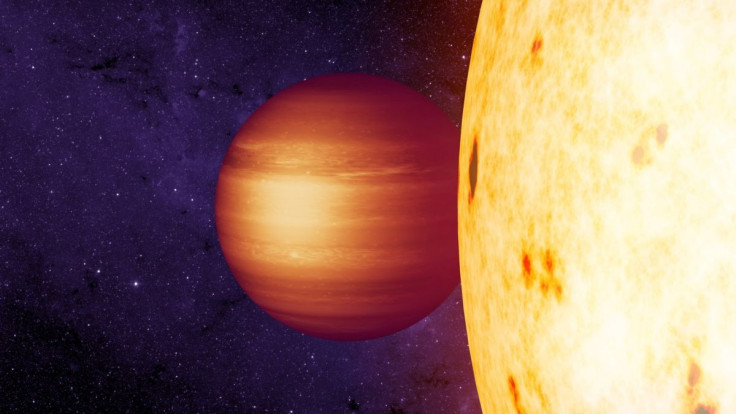Exoplanet’s Hot Spot Is Alien Mystery For Astronomers To Solve

Astronomers have discovered a mysterious hot spot on a gassy planet 930 light years from Earth.
The exoplanet’s spot is strange because it exists in a place where scientists did not expect to find it, based on their understanding of weather on other worlds. Figuring out how the hot spot developed could teach them more about the atmospheres and winds on planets outside our solar system.
The planet in question, dubbed CoRoT-2b, is a “hot Jupiter.” It is a world that is large and made of gas like our own Jupiter but orbits super close to its star, making it scorching hot. Those exoplanets are tidally locked, meaning they always show the same face to the star; one side is in perpetual daytime and the other in perpetual night. That creates a huge temperature difference, with the singular hottest location being the point on the daylight side nearest the star.
According to a study in the journal Nature Astronomy, sometimes winds gusting by the hot Jupiter’s equator can blow the hot spot eastward. But CoRoT-2b was found to have its hot spot on its western side.
The study says it’s possible the planet’s wind is blowing in the opposite direction because it rotates super slowly. There may also be a magnetic force at play, causing the winds to shift, or “partial cloud coverage” affecting the data.
The scientists also note the possibility that CoRoT-2b is not tidally locked: “Then [that] means that our understanding of star–planet tidal interaction is incomplete,” according to the study.
No matter the cause of the hot spot anomaly, the researchers say it offers an opportunity to learn more about how exoplanets tick.
The information about the hot spot and the temperatures across the planet’s surface came from infrared data collected through the Spitzer Space Telescope.
“We’ve previously studied nine other hot Jupiter, giant planets orbiting super close to their star,” study co-author Nicolas Cowan said in a statement from McGill University. “In every case, they have had winds blowing to the east, as theory would predict. … But now, nature has thrown us a curveball.”
The wind mystery is not the only strange thing about CoRoT-2b. Astronomers have also noted that it is larger than normal and emit an odd mixture of light.
“Both of these factors suggest there is something unusual happening in the atmosphere of this hot Jupiter,” lead study author Lisa Dang said in the statement. “We’ll need better data to shed light on the questions raised by our finding. … Fortunately, the James Webb Space Telescope, scheduled to launch next year, should be capable of tackling this problem.”
That space telescope, if it launches in 2019, will detect infrared light coming from faraway places, using the oldest galaxies to teach scientists about the universe and hunting for information about potentially habitable planets that will help us in the search for extraterrestrial life.
© Copyright IBTimes 2025. All rights reserved.



















